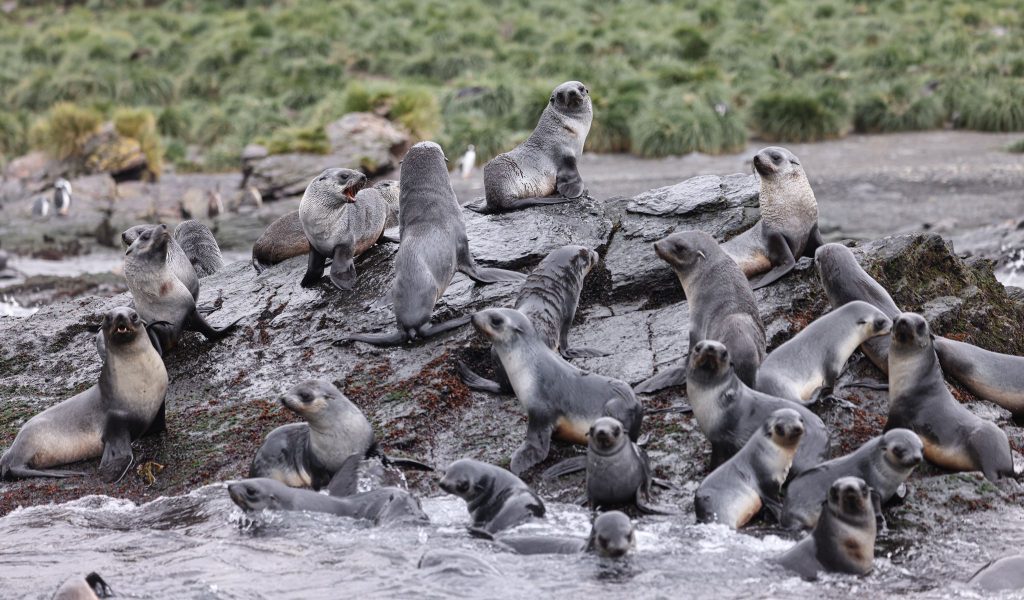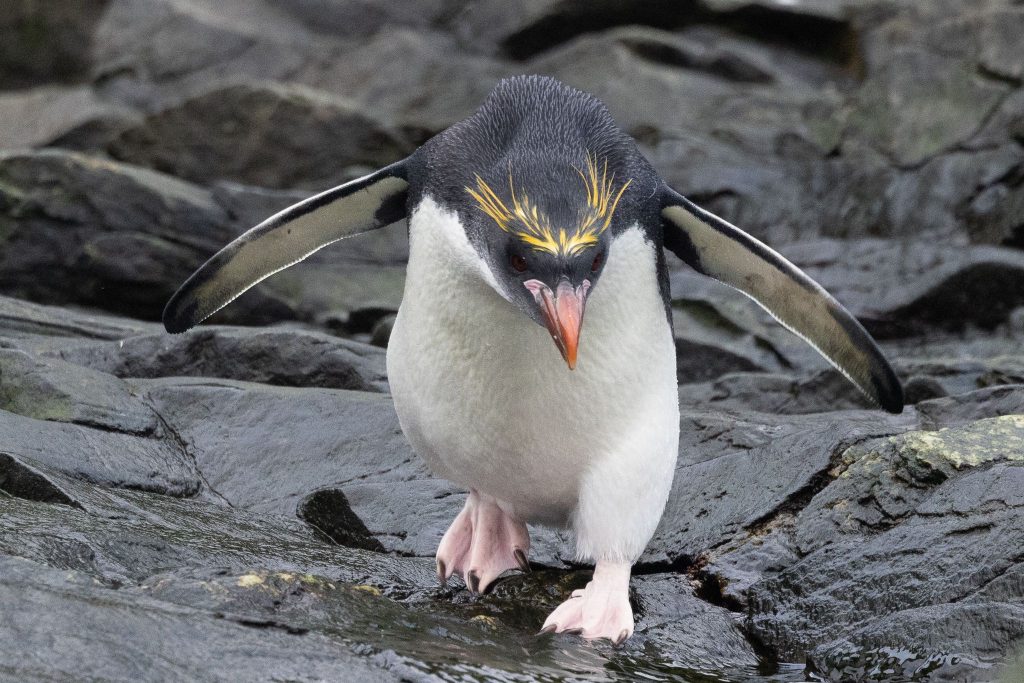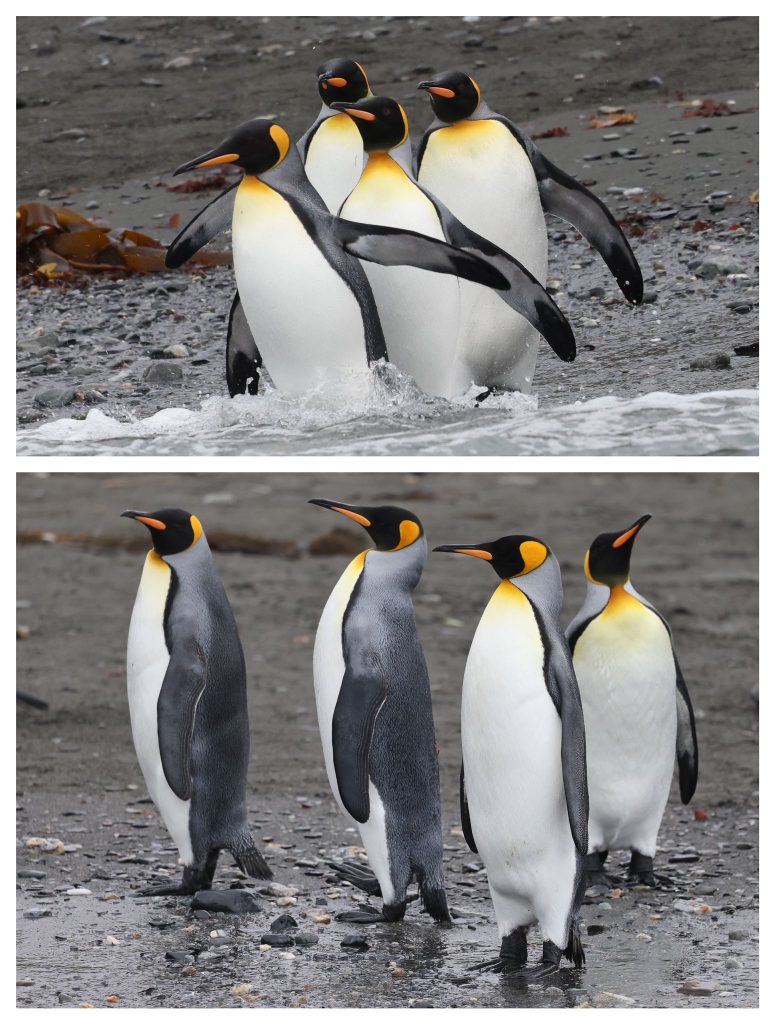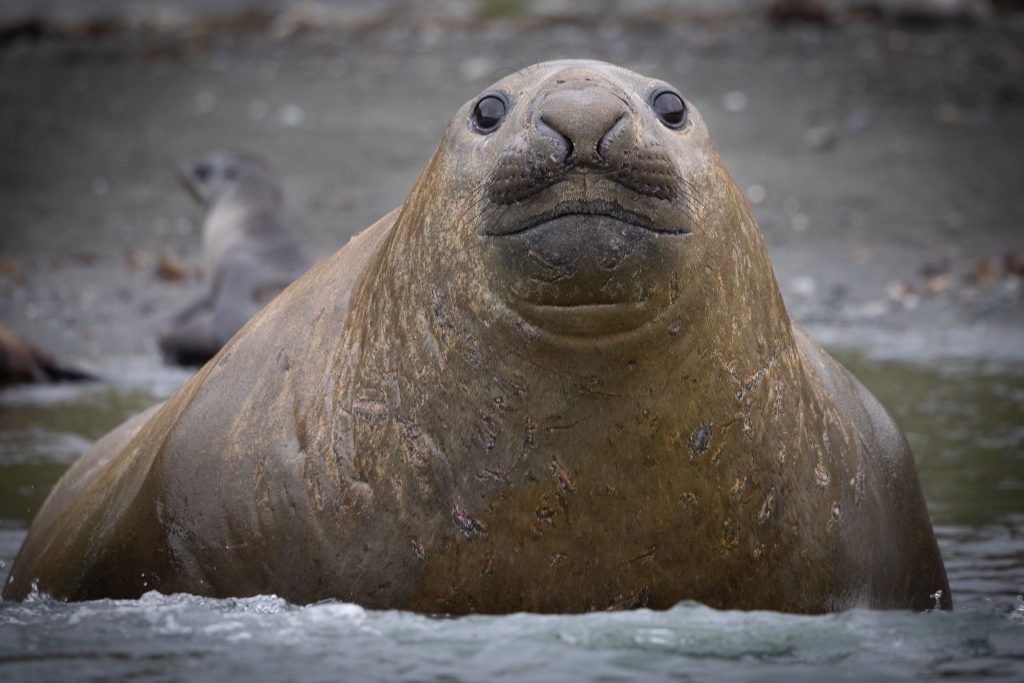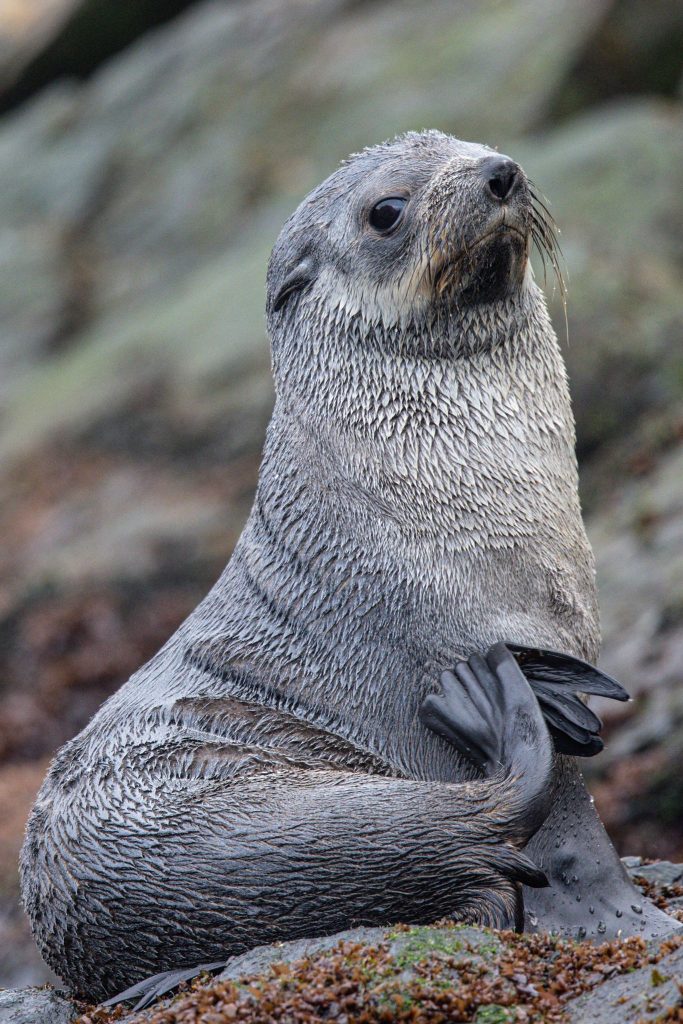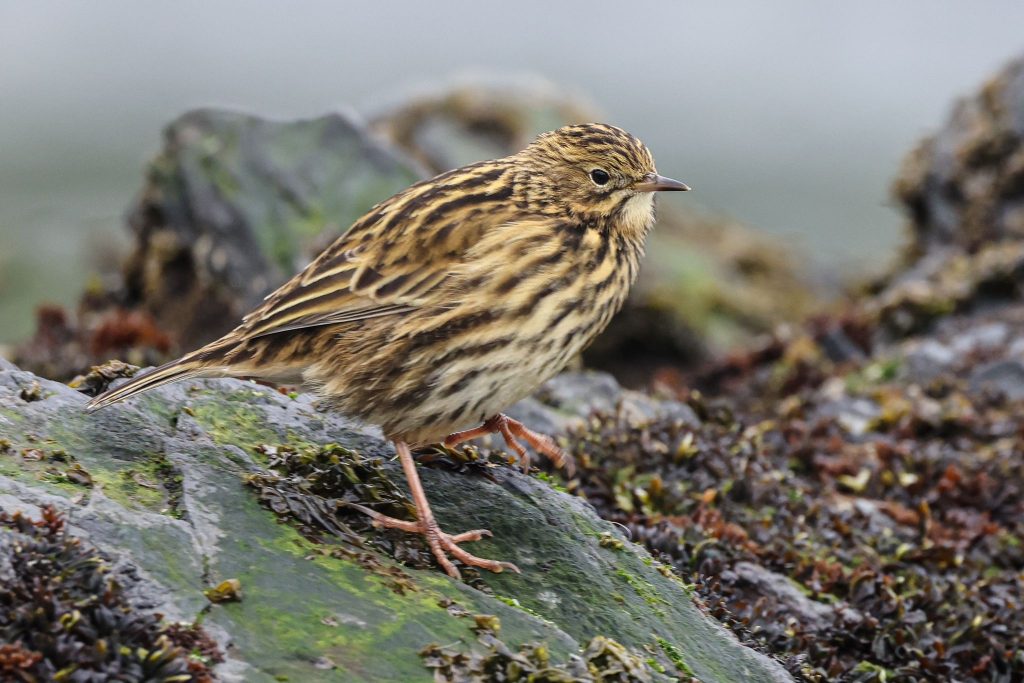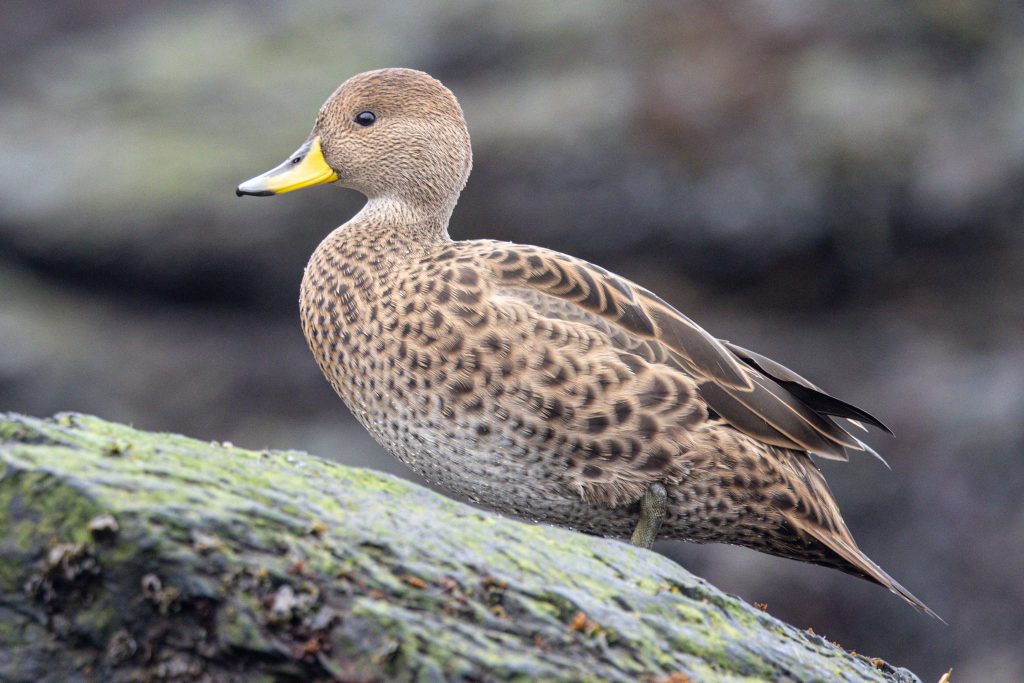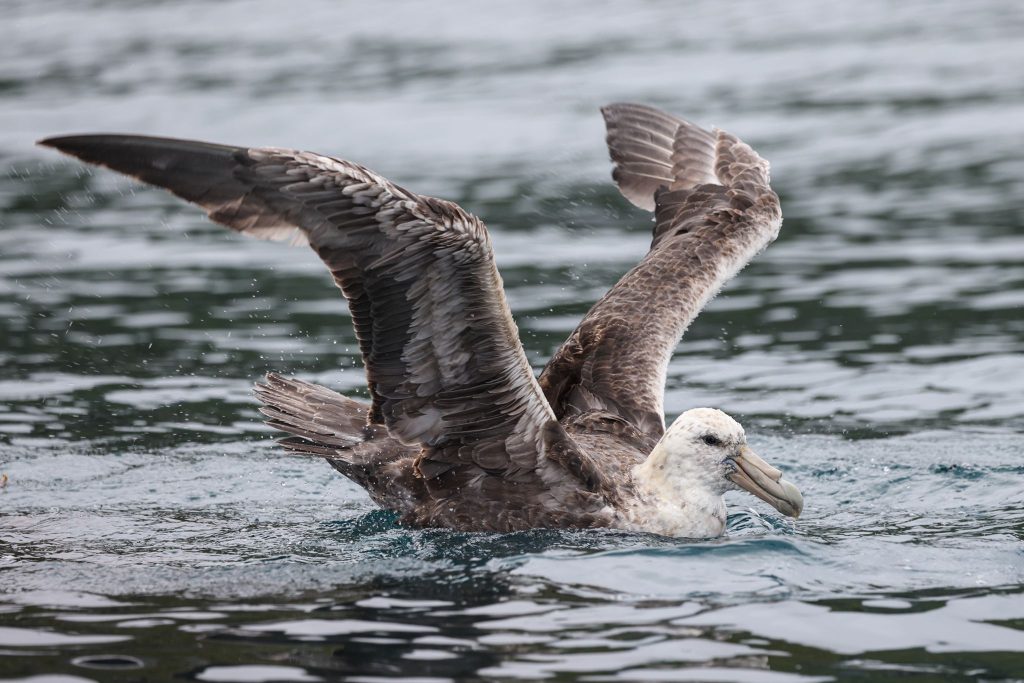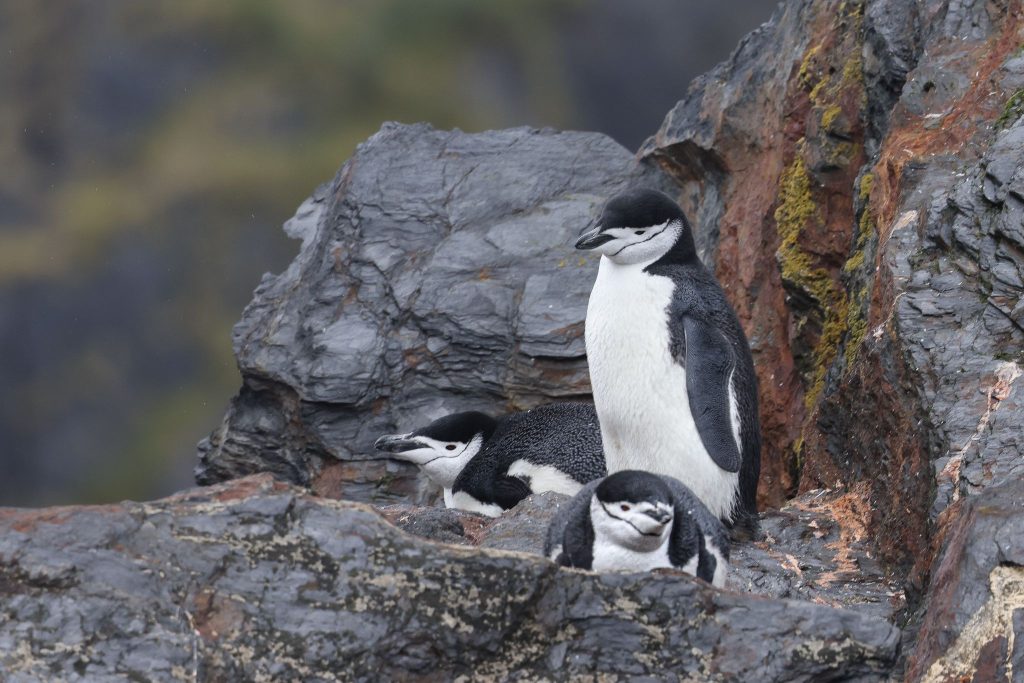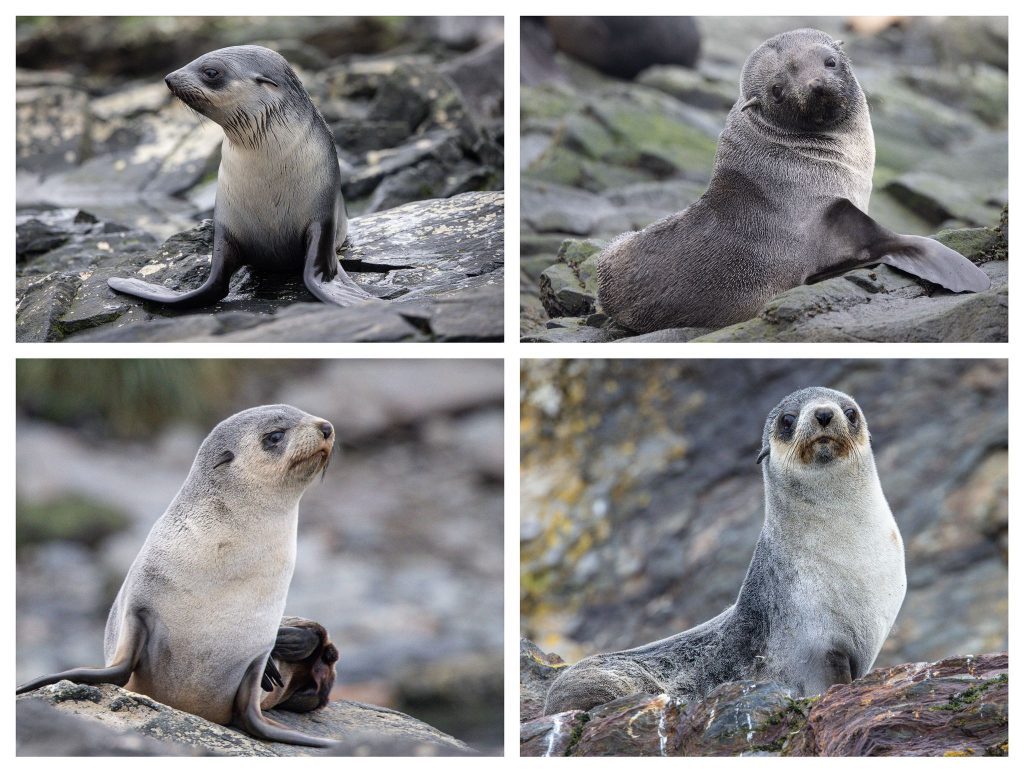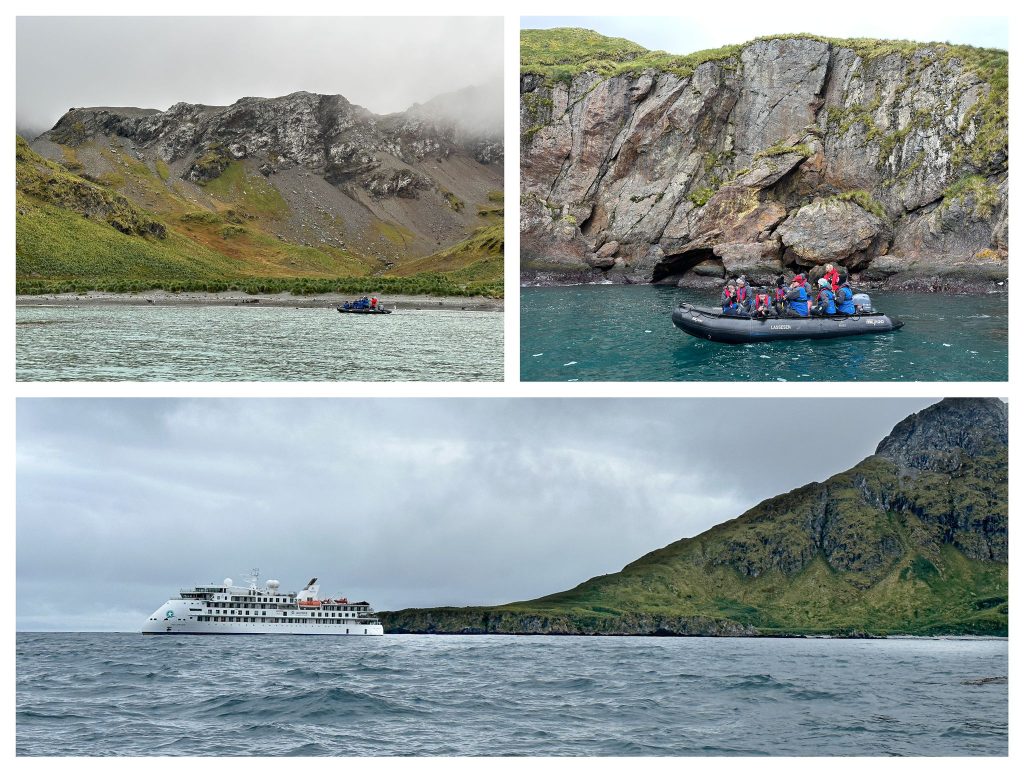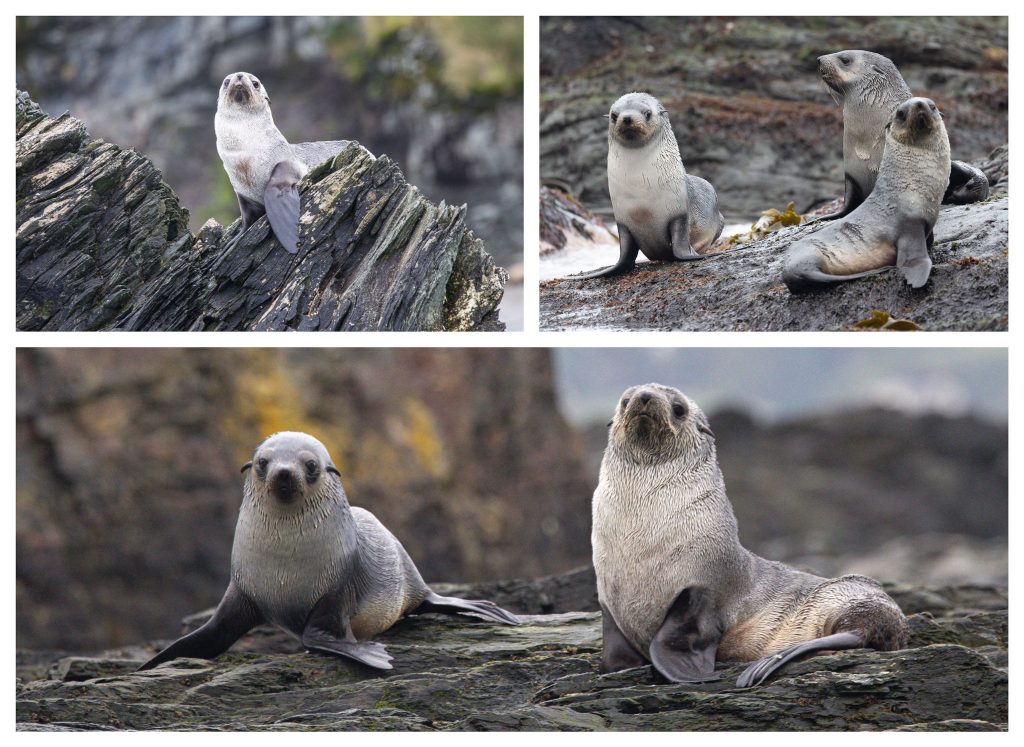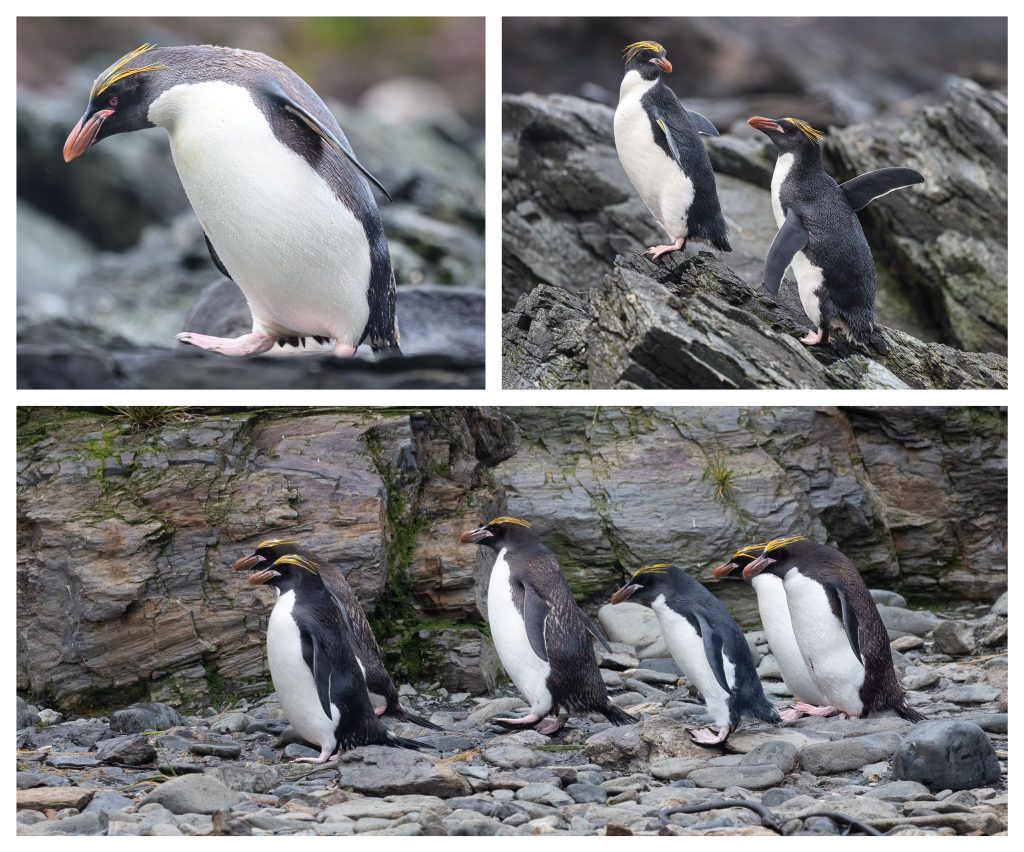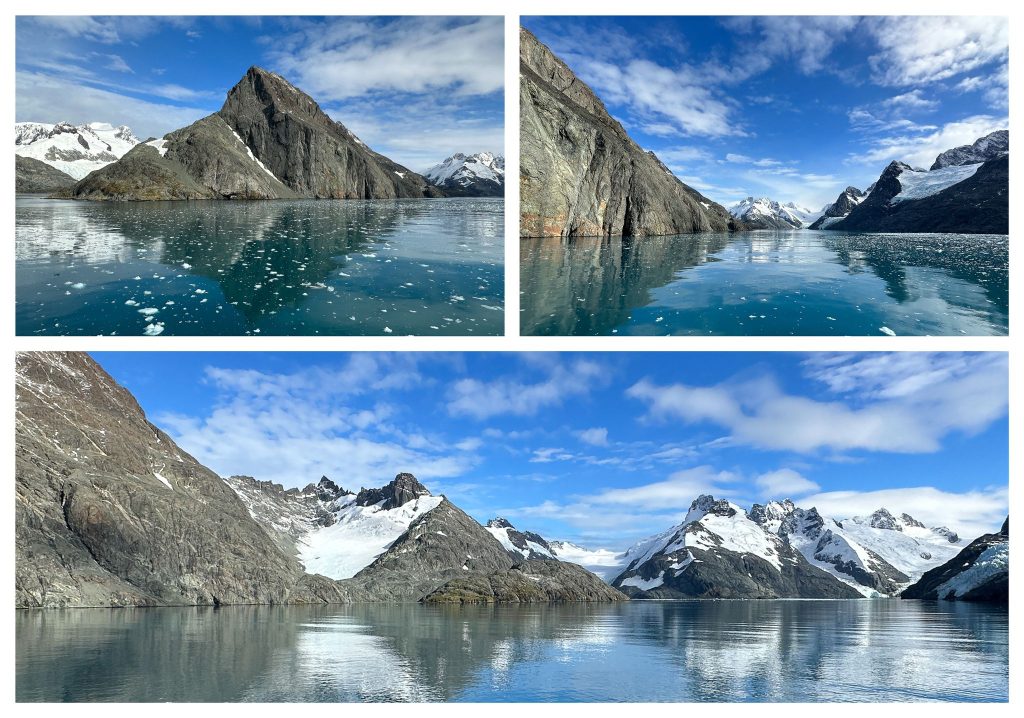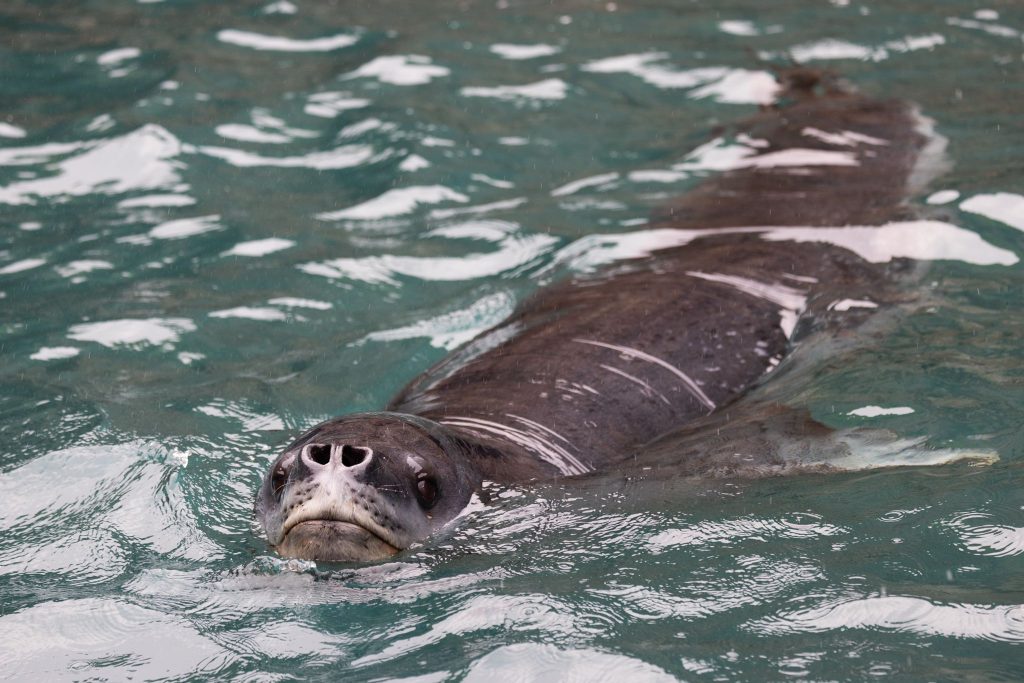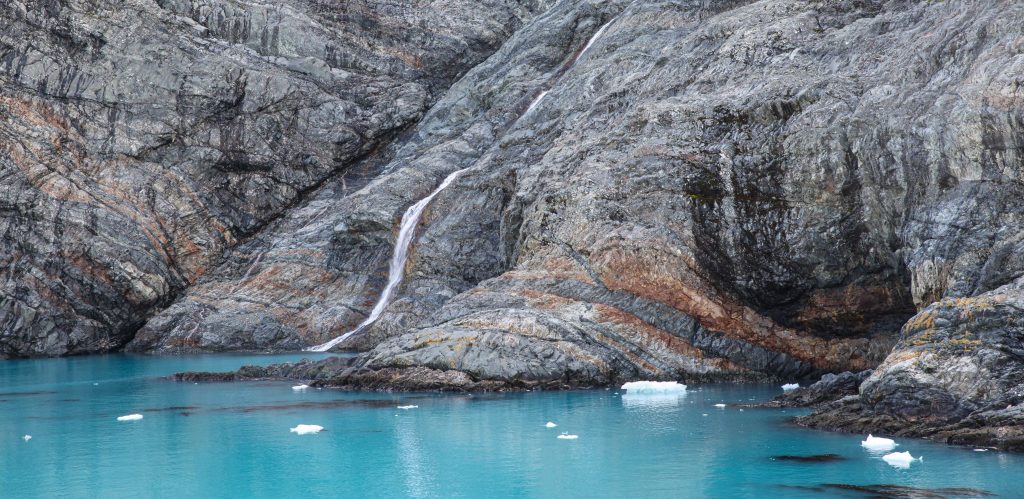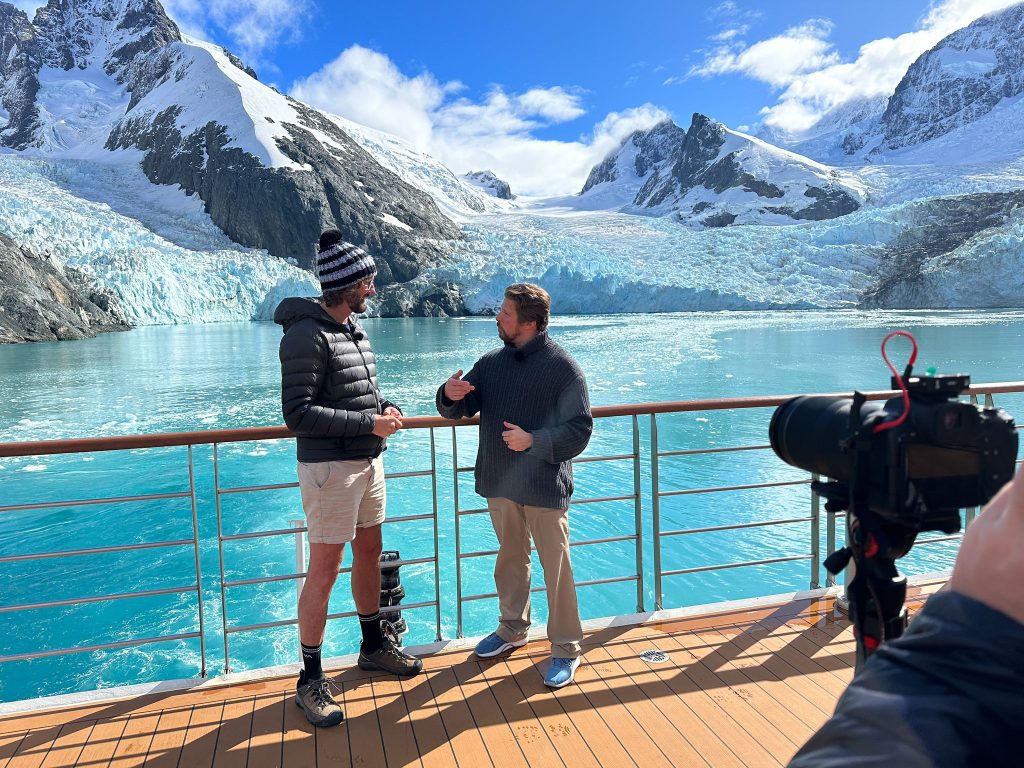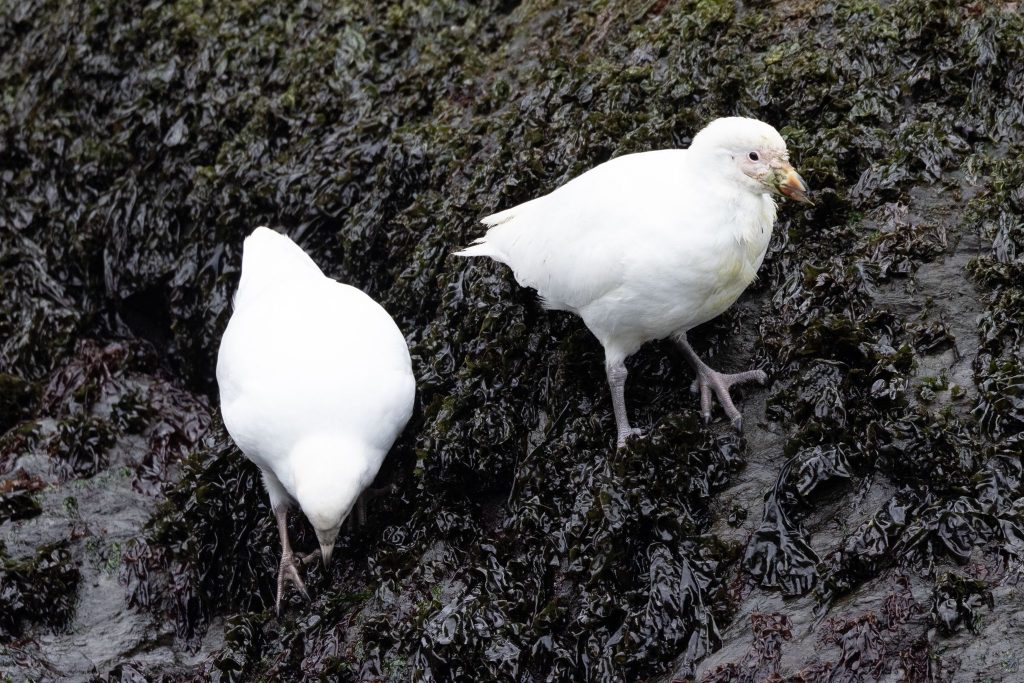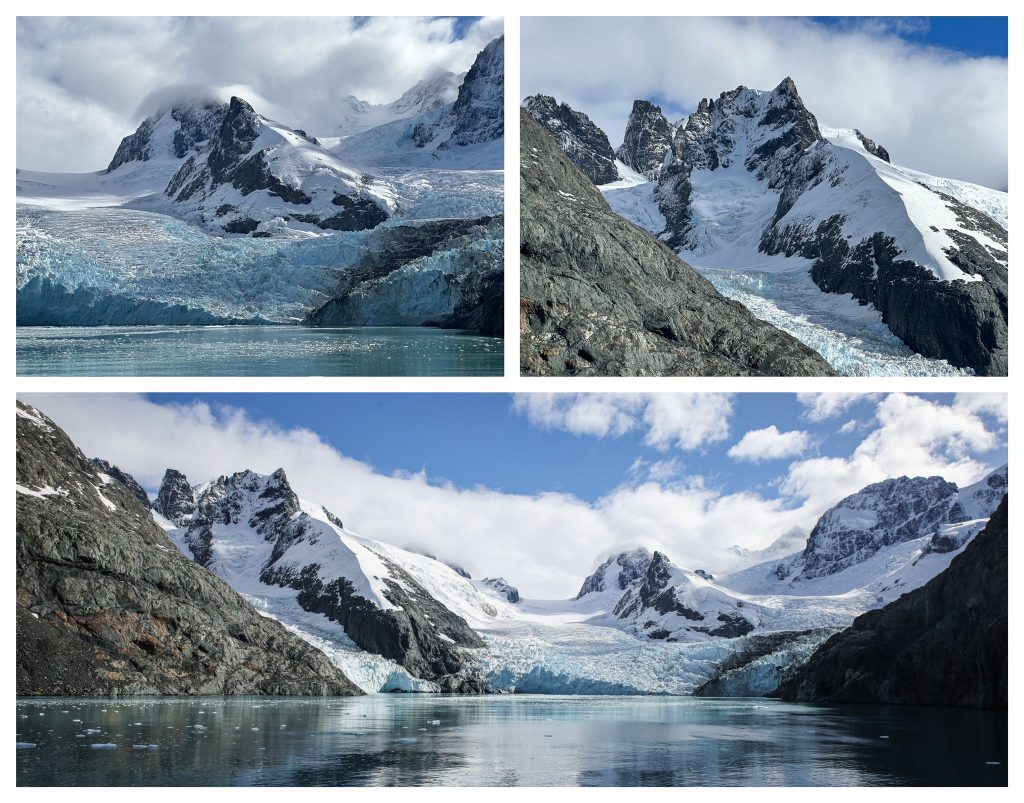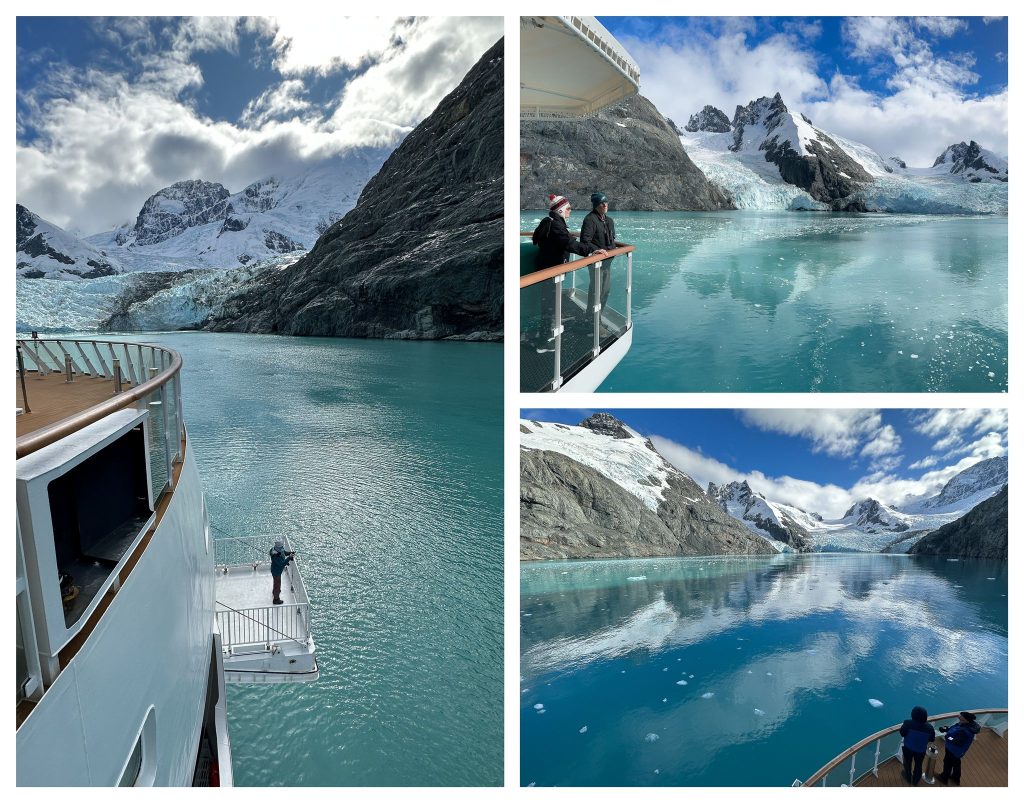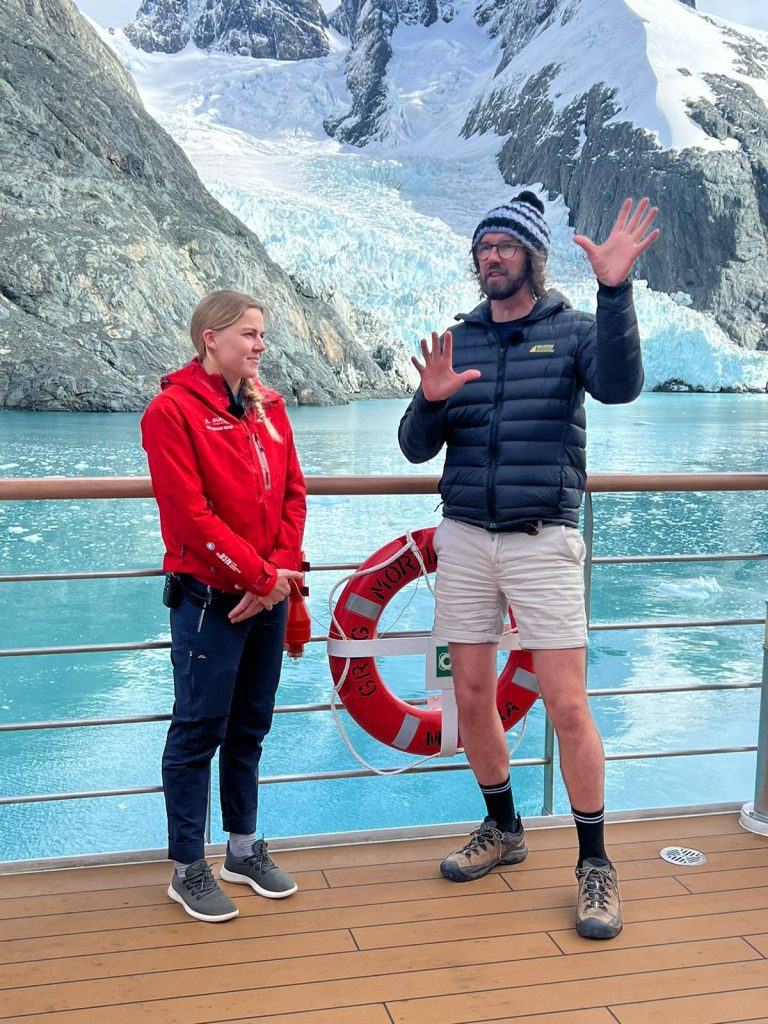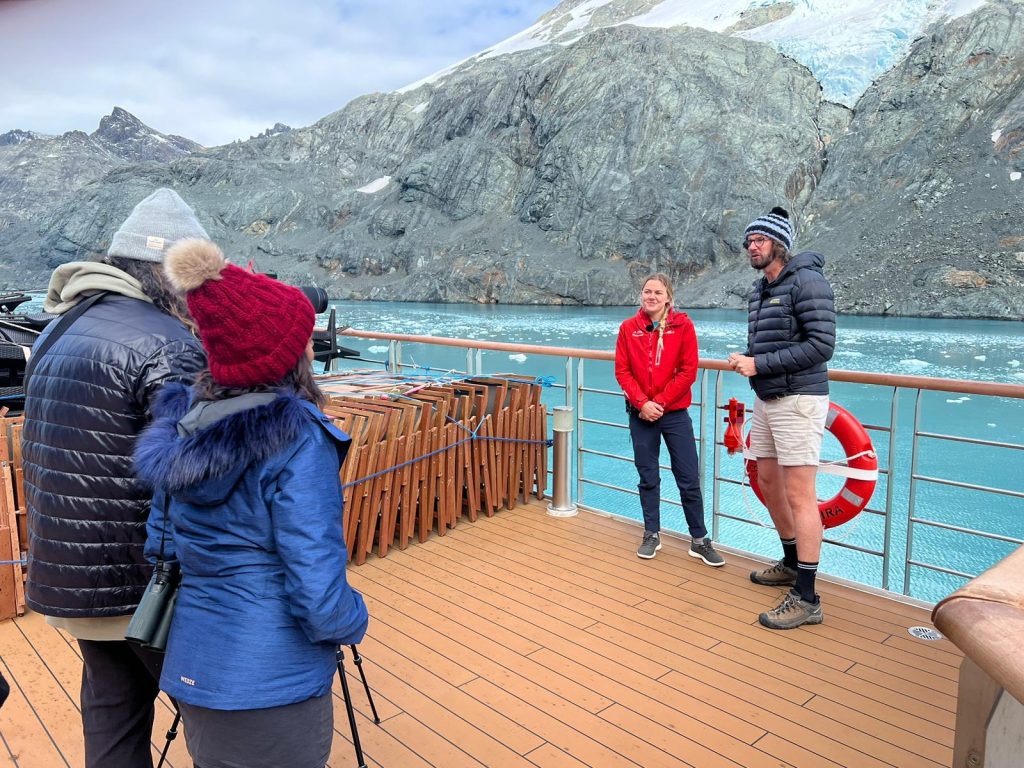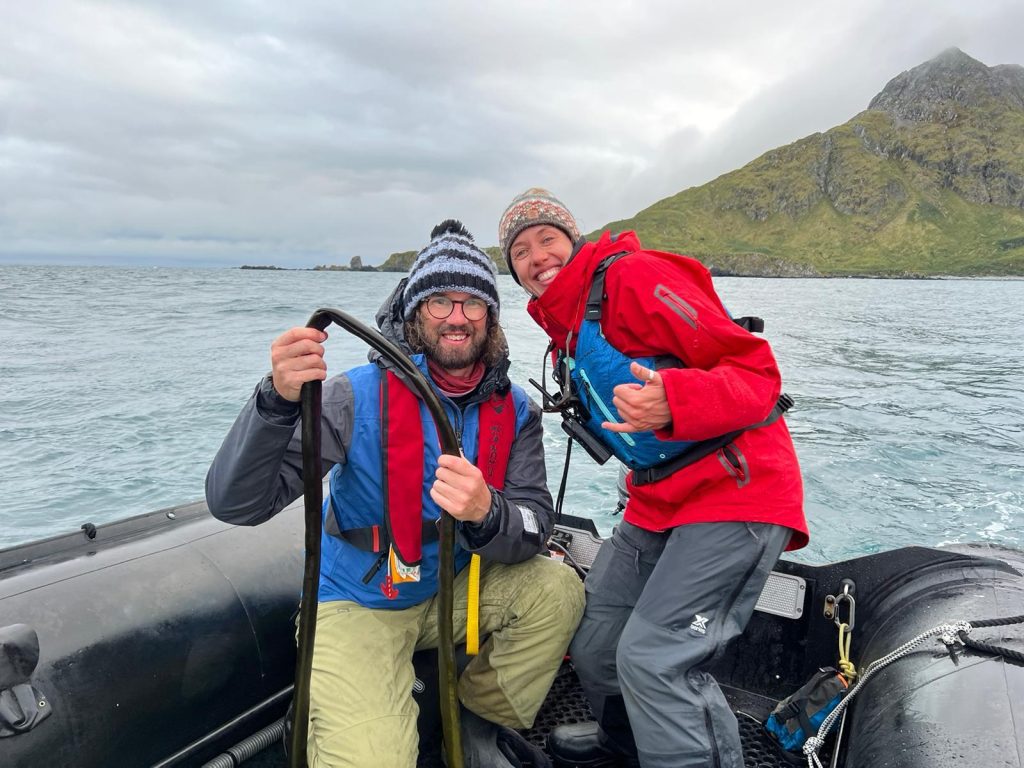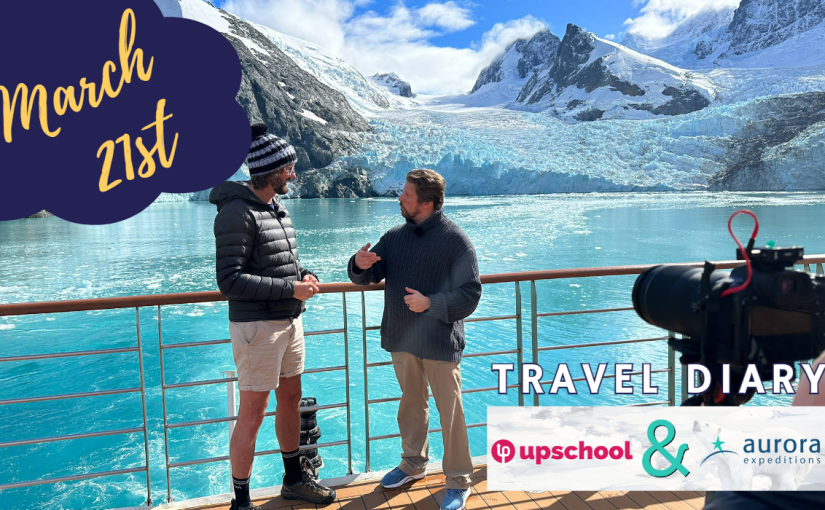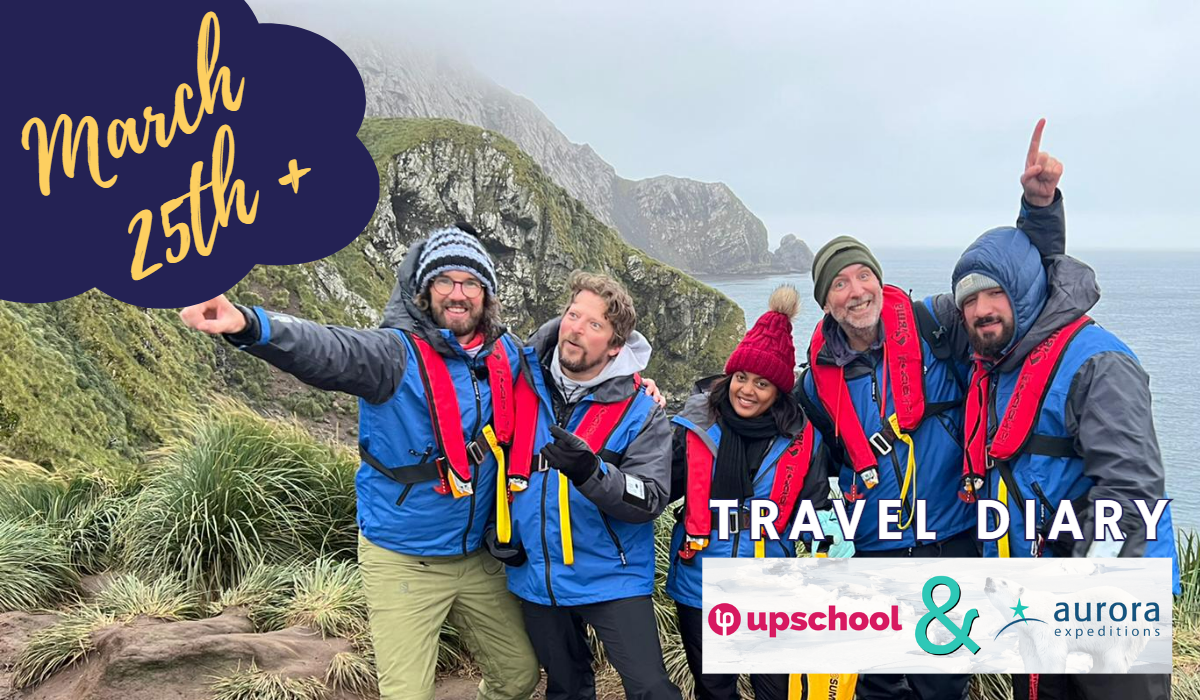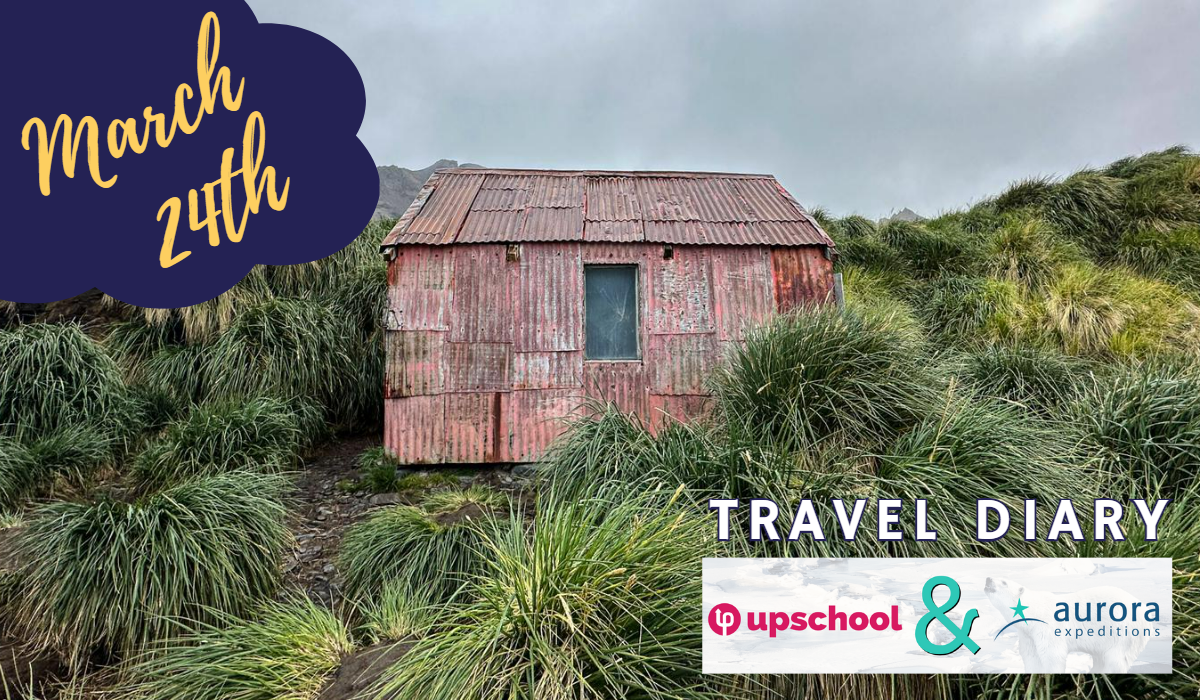Position at 0700 on 21st March
Latitude: 54°54’9” S
Longitude: 036°01’3” W
Course: 060°
Speed: 6.5 kts
Barometer: 994 hpa
Air temp: 0° C
Sea temp: 1° C
Wind Speed: NE 4
Penguin count: countless!
Whale count: also countless!!
It’s a beautiful morning when we arrive in South Georgia. The Captain of the Greg Mortimer, Vadym, and the expedition leader, Christian, make a special announcement! We’re going to slowly cruise through the Drygalski Fjord to take in the magnificent sights; the towering rock walls sprinkled with waterfalls, the soaring ice cliffs and the palatial Risting Glacier ahead of us. Drygalski Fjord is 14km long, named after Eric von Drygalski – the leader of the 1901-03 German Antarctic expedition. The mountains on the southern side are basalt and lava originating from underwater volcanic activity, and the other side is the ancient remains of the super continent named Gondwana. This is one of the only places in the world where these two distinct types of rock formation can be found.
Captain Vadym manoeuvres the ship 360 degrees and as we turn, the Upschool team record a lesson on the Ozone layers with environmental scientist Ella. Gavin and Ella talked about the Montreal protocol from 1987 where the whole world worked together to tackle the global problem of climate change, the mountains slowly receding behind us. In a moment of absolute serendipity, as Ella spoke about the threats of climate change, a distant crack sounds, and we capture the moment a glacier calves into the sea.
The afternoon takes us to Cooper Bay and another breathtaking Zodiac cruise! We snag Bia as our Zodiac driver and zoom over to a beautiful enclave surrounded by rocks with streams of bull kelp clinging onto them. Behind us looms some dark and cavernous rock cliffs, which makes the backdrop to our next recording on designing a kelp sanctuary in your school’s library, with Jordan from Young Art USA. We create a lesson on kelp and how it helps us to balance our climate whilst providing a safe haven for the creatures that live in this area. Seaweed stores a lot of carbon dioxide from the atmosphere, hence curbing climate change, and also provides a sanctuary for seal pups to hide from leopard seals.
Bia takes us around the bay of rocks filled with four types of penguins; Macaroni, Gentoo, Chinstrap and King. As we round the corner, we all gasp in awe – swimming, playing and dancing in the bay beside us are hundreds of young fur seals, cautious yet curious about us as we slowly approach. It is an indescribable feeling as we coast by quietly, careful not to disturb the serenity of the moment. Time stands still as we watch them twirl and spiral through the water. Further along on the shoreline, we see Macaroni penguins, more fur seals, and giant Petrels. We record a lesson with Bia on Macaroni penguins and how they hunt, breed and feed.
See you tomorrow and thanks for reading!
Tanya, Gavin, Graeme, Jordan & Matt
